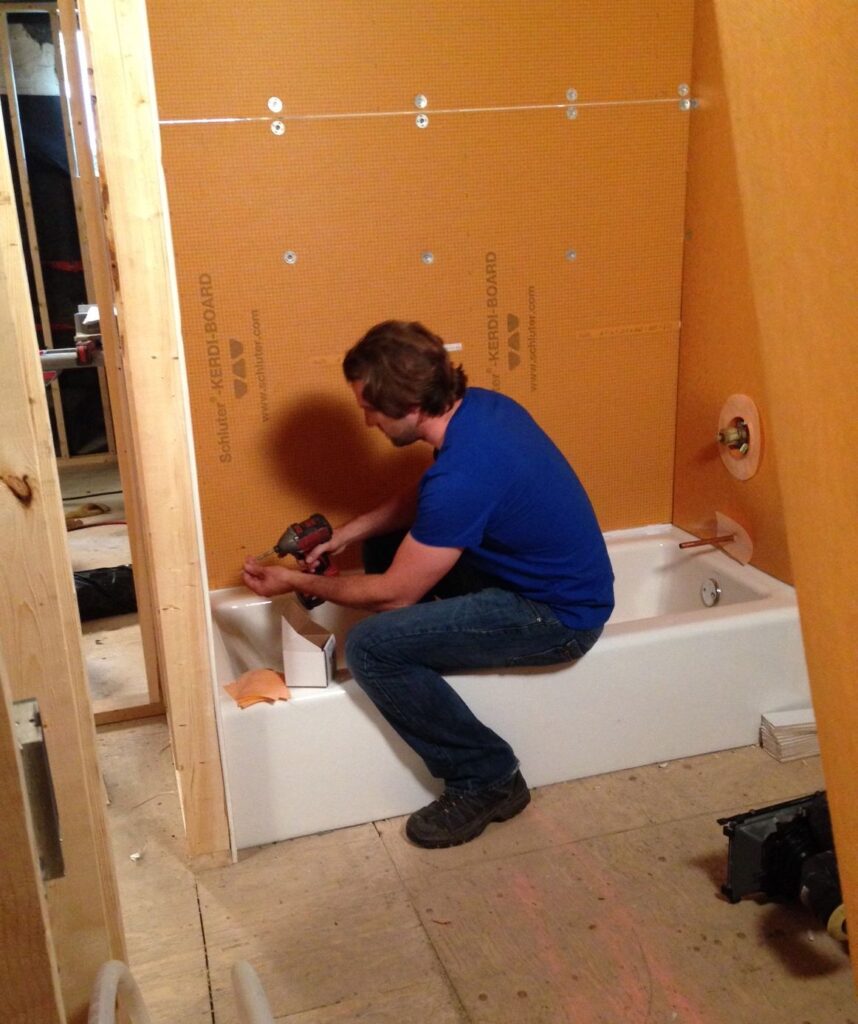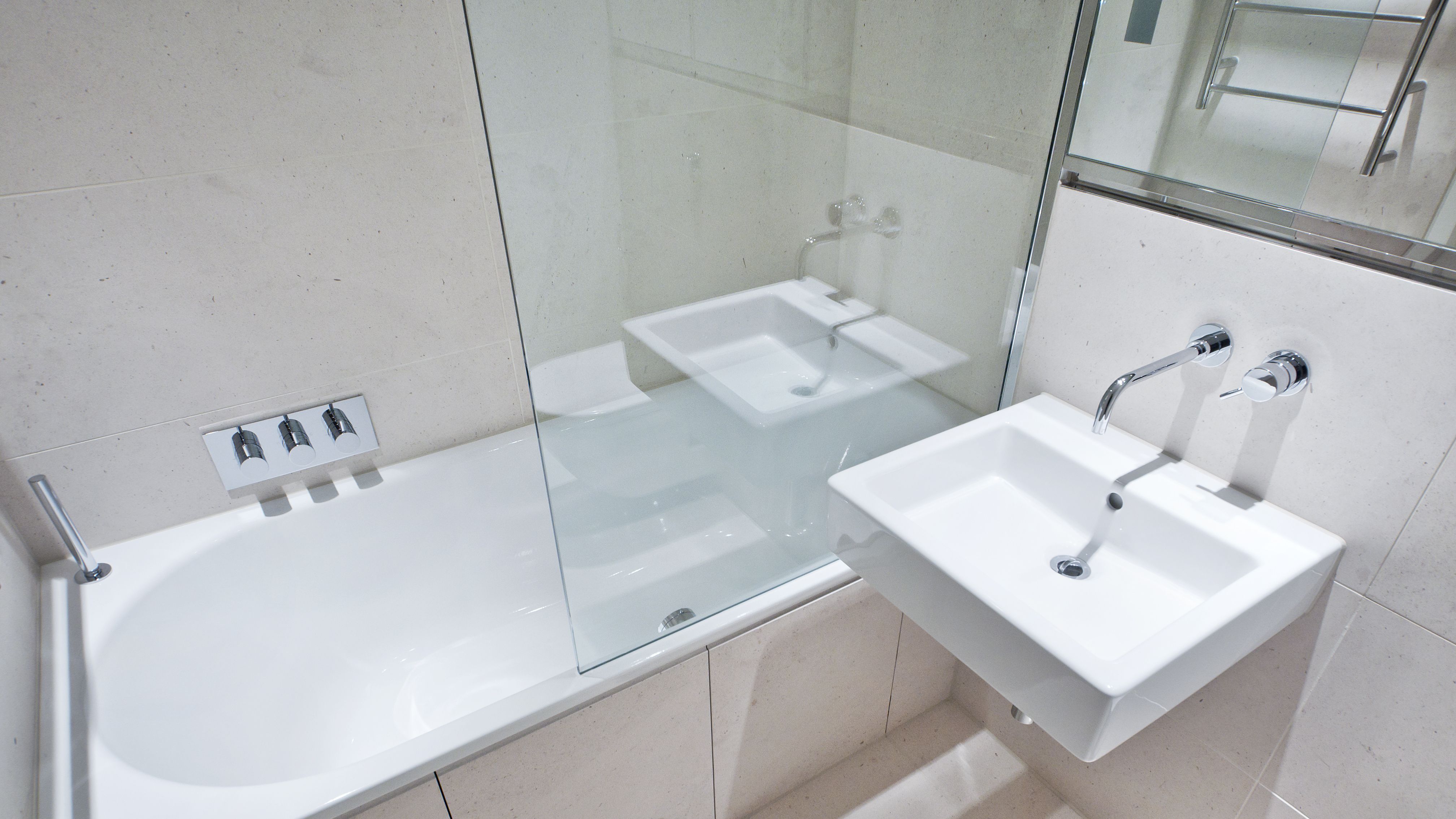Exactly how to Replace a Tub (Step By Step).
Exactly how to Replace a Tub (Step By Step).
Blog Article
Do you find yourself trying to find know-how concerning How to Install a Bathtub: Install an Acrylic Tub and Tub Surround?

Mounting a bathtub isn't specifically rocket science, however it does require strong plumbing, woodworking, as well as sometimes, tiling abilities. Replacing an old bath tub with a new one is likewise a reasonably difficult job. If the old tub is easily obtainable, the project can relocate speedily; if you have to open up a wall to eliminate the old bathtub and place the brand-new tub, the job is a lot harder. In either situation, the project is within a residence handyman's abilities, although you will require an assistant to move out the old bathtub and also embeded in the new one. Make certain you have actually qualified on your own for the work and fit trying it. Rather than employing a contractor to take over a halfway-completed task, it is better to think about utilizing one prior to you start. Chances are you may require a specialist plumber to make tube links.
This article will assist you install a new tub in your bathroom if you have currently acquired a brand-new tub and don't need to change the arrangement of your previous water system pipelines.
Your tools as well as product list ought to make up the following:
Removing Old Taps
If you need to replace old taps with new ones as a part of your installment, after that the first thing you should do is detach the water system. After doing so, activate the faucets to drain any water staying in the system. The procedure of getting rid of the existing faucets can be quite problematic because of the restricted accessibility that is typically the case.
Use a basin wrench (crowsfoot spanner) or a tap tool to undo the nut that links the supply pipelines to the faucets. Have a fabric prepared for the staying water that will come from the pipes. Once the supply pipelines have actually been removed, use the very same device to loosen up the nut that holds the taps onto the bath/basin. You will need to stop the solitary faucets from transforming throughout this process. When the taps have been gotten rid of, the holes in the bath/basin will certainly need to be cleaned up of any old securing substance.
Prior to carrying on to fit the new taps, contrast the pipe connections on the old faucets to the new taps. If the old faucets are longer than the brand-new taps, then a shank adapter is needed for the brand-new faucets to fit.
Suitable New Touches
If the tails of the new taps are plastic, then you will require a plastic adapter to stop damages to the string. One end of the port fits on the plastic tail of the tap and the other end provides a link to the current supply pipes.
If you need to fit a monobloc, after that you will certainly require reducing couplers, which attaches the 10mm pipeline of the monobloc to the common 15mm supply pipe.
Next, position the faucet in the placing hole in the bath/basin guaranteeing that the washers are in area in between the tap and the sink. Safeguard the faucet in place with the producer provided backnut. As soon as the tap is securely in position, the supply pipes can be connected to the tails of the faucets. The faucets can either be linked by utilizing corrugated copper piping or with typical tap connectors. The previous type should be attached to the faucet ends first, tightening up only by hand. The supply pipes can later on be linked to the other end. Tighten up both ends with a spanner after both ends have been connected.
Mounting the Tub
Using both wooden boards under its feet, position the tub in the required position. The wood boards are valuable in equally spreading out the weight of the bathtub over the location of the boards rather than concentrating all the weight onto 4 small factors.
The next objective is to make sure that the bathtub is leveled all round. This can be attained by inspecting the level as well as adjusting the feet on the tub until the level reads degree.
To install taps, fit the bottom of the outermost versatile faucet port to the appropriate supply pipeline by making a compression join; after that do the same for the various other tap.
Turn on the supply of water and also check all joints and also new pipework for leakages and tighten them if needed. Fill the tub and likewise examine the overflow outlet as well as the regular outlet for leakages.
Finally, fix the bath paneling as defined in the manufacturer's user's manual. Tiling and sealing around the bath tub should wait up until the bath tub has been utilized at least once as this will resolve it into its final placement.
Preparing for the Setup
To start with, the sustaining frame provided with the bathroom must be fitted (if required) according to the producer's instructions. Next off, fit the taps or mixer to the tub. When suitable the tap block, it is very important to see to it that if the tap includes a plastic washing machine, it is fitted in between the bath as well as the faucets. On a plastic bathroom, it is also sensible to fit a supporting plate under the faucets unit to stop stress on the bath tub.
Fit the adaptable tap connectors to the bottom of both faucets using 2 nuts and olives (in some cases provided with the bathtub). Fit the plug-hole outlet by smearing mastic filler round the sink electrical outlet opening, and then pass the electrical outlet via the hole in the bath. Use the nut provided by the supplier to fit the plug-hole. Examine the plug-hole outlet for an inlet on the side for the overflow pipeline.
Next off, fit completion of the flexible overflow pipe to the overflow electrical outlet. Afterwards, screw the pipeline to the overflow face which should be fitted inside the bath. Make certain you make use of every one of the supplied washers.
Link the catch to the bottom of the waste electrical outlet on the bath tub by winding the thread of the waste outlet with silicone mastic or PTFE tape, and screw on the trap to the outlet. Link the bottom of the overflow tube in a comparable manner.The bathroom need to currently be ready to be fitted in its final position.
Tiling Around the Tub
In the area where the bath satisfies the ceramic tile, it is essential to secure the accompanies a silicone rubber caulking. This is important as the fitting can relocate enough to crack a rigid seal, causing the water to penetrate the wall between the bath as well as the tiling, resulting in issues with moisture as well as possible leaks to the ceiling below.
You can choose from a selection of coloured sealers to assimilate your components and also installations. They are marketed in tubes and also cartridges, as well as can sealing spaces approximately a size of 3mm (1/8 inch). If you have a bigger gap to fill, you can fill it with spins of drenched paper or soft rope. Bear in mind to always fill the bathtub with water before securing, to permit the activity experienced when the bathtub is in use. The sealant can crack rather very early if you do not think about this activity prior to sealing.
Alternatively, ceramic coving or quadrant tiles can be made use of to border the bath or shower tray. Plastic strips of coving, which are easy to use as well as cut to size, are additionally quickly offered on the market. It is advisable to fit the floor tiles making use of water-resistant or waterproof adhesive and also grout.
Bathtub Installation
How Important Is A Bathtub To Your Home?
High-quality baths, showers, and other bathroom updates are necessary when considering a smart investment in your home. It’s a room that you go to every day and one that is constantly being used by guests.The bathroom is one of the top trafficked rooms in a home and also one of the most valuable in terms of home resale.
Install Piping Before Tub
You will be using your existing drain and waste vent system, but pipes required include the hot and cold water supply lines and a pipe leading to a shower head. A mixing valve and shower head are also needed. Air chambers may be required.
Position the Tub
Lower the tub into place so that the continuous flange fits against the wall studs and rests on 1’x4' or 2’x4' supports. Anchor the tub to the enclosure with nails or screws inserted through the flanges into the studs.
NOTE: Remember, bathtubs and shower stalls may require support framing. A bathtub filled with water is extremely heavy, so check building codes and framing support before installing the tub.
Assemble Drain Connections
Assemble the bathtub drain connections by connecting the tub overflow with the tub drain above the trap, not beyond it. The trap will have a compression fitting that screws over the arm of the overflow assembly.
Place a Pipe For the Shower Head
First, locate a brass female threaded winged fitting and attach it to a framing support via a screw or a nail. Then run a pipe up the wall for the shower head. Sweat or solder the other side of the brass fitting to the top of the pipe.
Attaching Hot and Cold Water Lines
Attach your water lines for both hot and cold by sweating these directly into the hot and cold ports of the mixing valve. The mixing valve will be how water enters the tub’s system, not by the pipes themselves.
Install the Spout
Extend a piece of 1/2 inch pipe, or whichever length is specified in the manufacturer’s instructions, for the tub spout. Sweat on a male threaded fitting at the end of the pipe or use a brass nipple of the proper length and a 1/2 inch cap.
NOTE: At this point you should have your rough-in plumbing work inspected before proceeding further.
Check For Leaks
Restore the water pressure and check the drain connection and the supply pipes for any sign of leaking.
estore the Bathroom Wall
Replace the wall with moisture-resistant drywall as a base for your wall covering. Seal the joints between the wall and your new tub with silicone caulk as protection against water seepage.
https://www.berkeys.com/2016/12/02/bathtub-installation-dallas/

Do you like more info about Tools You Need to Install a New Bathtub ? Place a remark down below. We will be interested to find out your suggestions about this page. Hoping to see you back again in the future. Sharing is nice. Helping others is fun. Many thanks for going through it.
Go Company Report this page